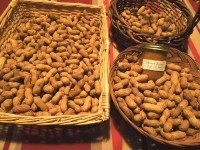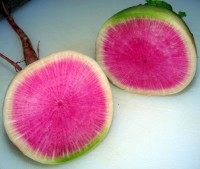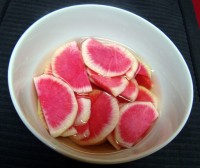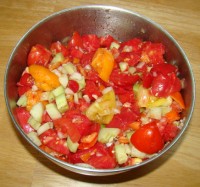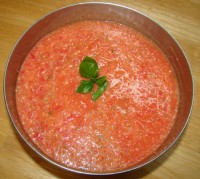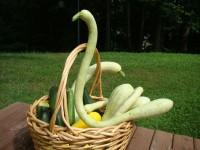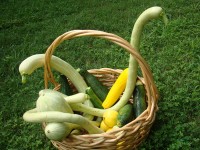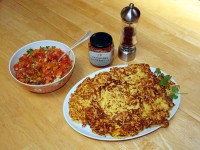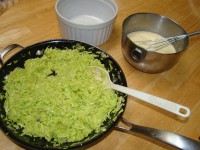Thu 29 Nov 2012
The Last Harvest: Parsnips
Posted by Bob under Recipes, Vegetable Garden
No Comments
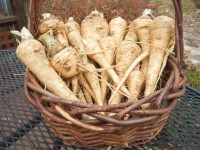 While we continue to get lettuce and other greens from our fall garden, our last real crop harvest was parsnips. Planted in April, I basically left them alone, with their above-ground leafy greens shading and keeping down weeds. I grew two varieties: Harris Model and Hollow Crown, with the former producing on average a better yield; both have a nice nutty flavor.
While we continue to get lettuce and other greens from our fall garden, our last real crop harvest was parsnips. Planted in April, I basically left them alone, with their above-ground leafy greens shading and keeping down weeds. I grew two varieties: Harris Model and Hollow Crown, with the former producing on average a better yield; both have a nice nutty flavor.
 Wanting to make a dinner that showcased our late fall garden and other local sources, I settled on the following menu, which worked quite nicely: Kibbeh, using ground beef from a one-quarter (cut-up and packaged) cow we purchased from nearby Davis Creek Farm along with mint still thriving in our garden; Mashed Carrots and Turnips, a recipe we’d picked up at the mountain farm exhibit by the Humpback Rocks Visitor Center along the Blue Ridge Parkway, including a golden-top turnip from our garden; and Parsnips Glazed with Sherry, Ginger, Thyme, and Lemon, using some of our just-harvested parsnips along with fresh thyme still growing in our garden. If you’re interested in the recipes, click on: (more…)
Wanting to make a dinner that showcased our late fall garden and other local sources, I settled on the following menu, which worked quite nicely: Kibbeh, using ground beef from a one-quarter (cut-up and packaged) cow we purchased from nearby Davis Creek Farm along with mint still thriving in our garden; Mashed Carrots and Turnips, a recipe we’d picked up at the mountain farm exhibit by the Humpback Rocks Visitor Center along the Blue Ridge Parkway, including a golden-top turnip from our garden; and Parsnips Glazed with Sherry, Ginger, Thyme, and Lemon, using some of our just-harvested parsnips along with fresh thyme still growing in our garden. If you’re interested in the recipes, click on: (more…)
